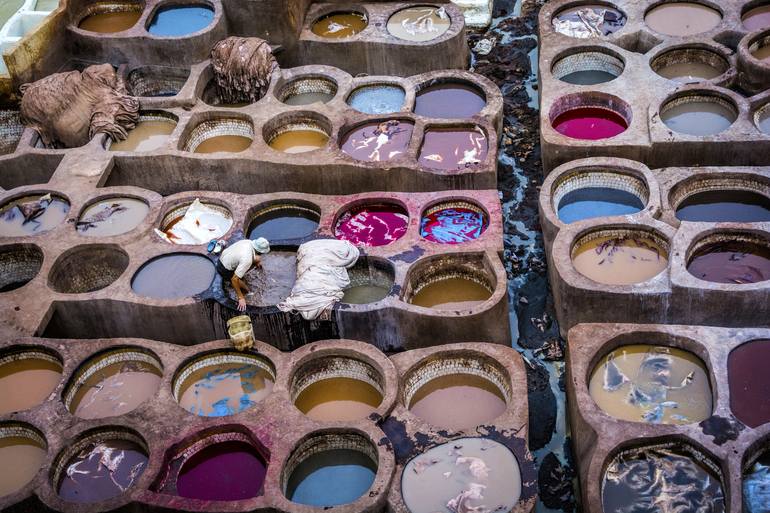







800 Views
21
View In My Room
Photography, Color on Paper
Size: 47.2 W x 31.5 H x 0.2 D in
Ships in a Tube
$2,672
Shipping included
Trustpilot Score
800 Views
21
Artist Recognition

Featured in the Catalog

Artist featured in a collection
ABOUT THE ARTWORK
DETAILS AND DIMENSIONS
SHIPPING AND RETURNS
The city of Fes - Morocco's third largest city – was founded in the 8th century and it has a distinct traditional character. Located behind a high wall, in the car-free alleys of the old town or medina where hundreds of merchants and craftsmen sell a range of products are several tanneries which are...
Year Created:
2016
Subject:
Mediums:
Mediums:
Photography, Color on Paper
Rarity:
Limited Edition of 5
Size:
47.2 W x 31.5 H x 0.2 D in
Ready to Hang:
Not Applicable
Frame:
Not Framed
Authenticity:
Certificate is Included
Packaging:
Ships Rolled in a Tube
Delivery Cost:
Shipping is included in price.
Delivery Time:
Typically 5-7 business days for domestic shipments, 10-14 business days for international shipments.
Returns:
The purchase of photography and limited edition artworks as shipped by the artist is final sale.
Handling:
Ships rolled in a tube. Artists are responsible for packaging and adhering to Saatchi Art’s packaging guidelines.
Ships From:
Vietnam.
Need more information?
Need more information?
Serge Horta
Vietnam
Serge Horta is a documentary photographer based in Ho Chi Minh City. He recently relocated to Vietnam after spending nearly two decades capturing the raw essence of life in Hong Kong. Through his academic training in architecture, he is able to capture an impossible order amidst the chaos of cities. His photographs stem from a hypnotic obsession with how different cultures live, adapt, and interact with the built environment - from the perfectly manicured suburbs to sprawling slums. His extensive portfolio documents the metamorphosis of the urban landscapes in which he has lived or merely traversed. Amid the noise and chaos, Serge manages to find moments of peace and silence. Having photographed in over 100 countries, his work reveals deeply personal and engaging human stories that emerge from what is often overlooked, leaving a powerful and lasting impression on viewers. Serge’s work is held in private collections around the world, from the United States to Australia.
Artist Recognition

Featured in Saatchi Art's printed catalog, sent to thousands of art collectors

Artist featured by Saatchi Art in a collection
Why Saatchi Art?
Thousands of
5-Star Reviews
We deliver world-class customer service to all of our art buyers.
Global Selection of Original Art
Explore an unparalleled artwork selection from around the world.
Satisfaction Guaranteed
Our 14-day satisfaction guarantee allows you to buy with confidence.
Support Emerging Artists
We pay our artists more on every sale than other galleries.
